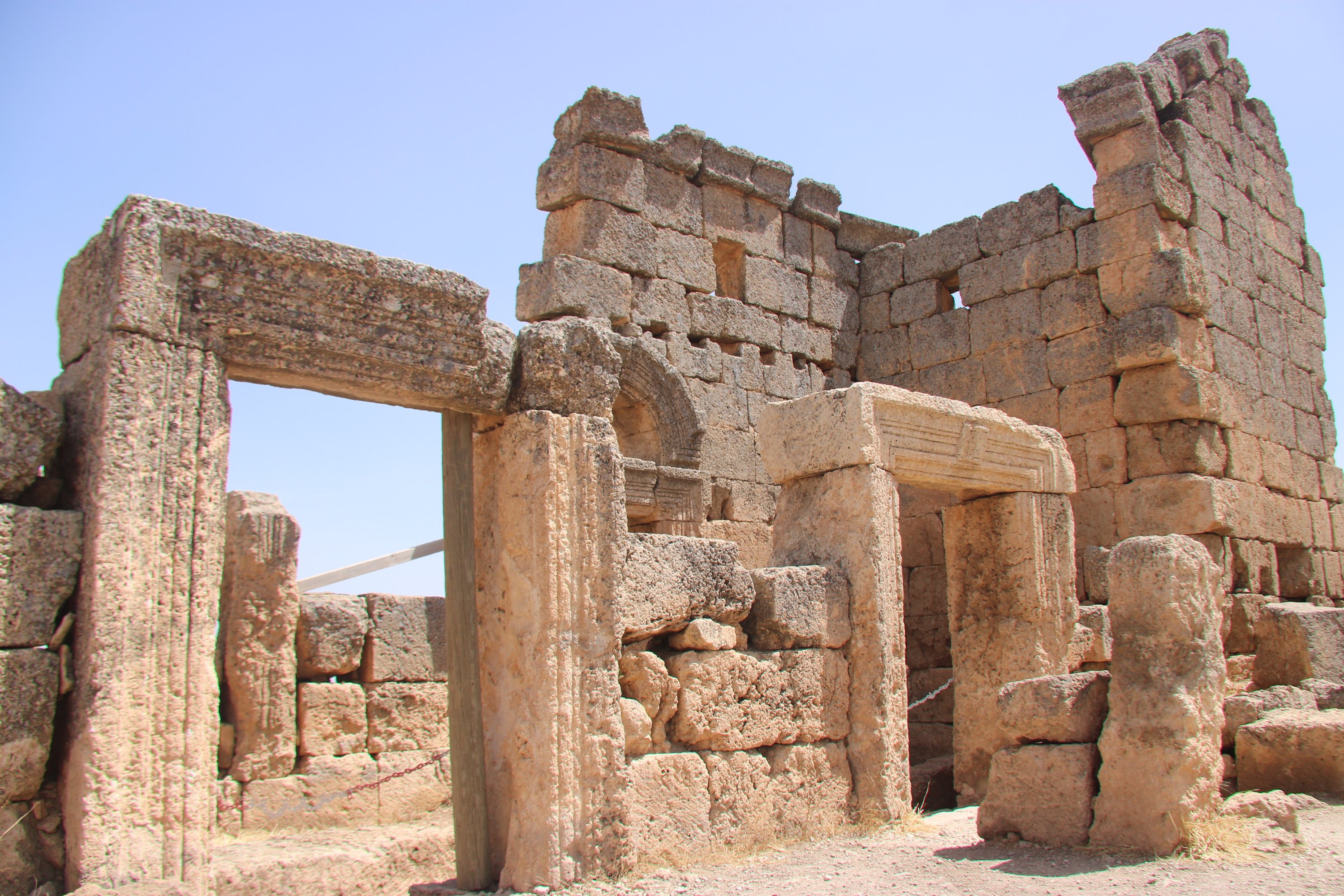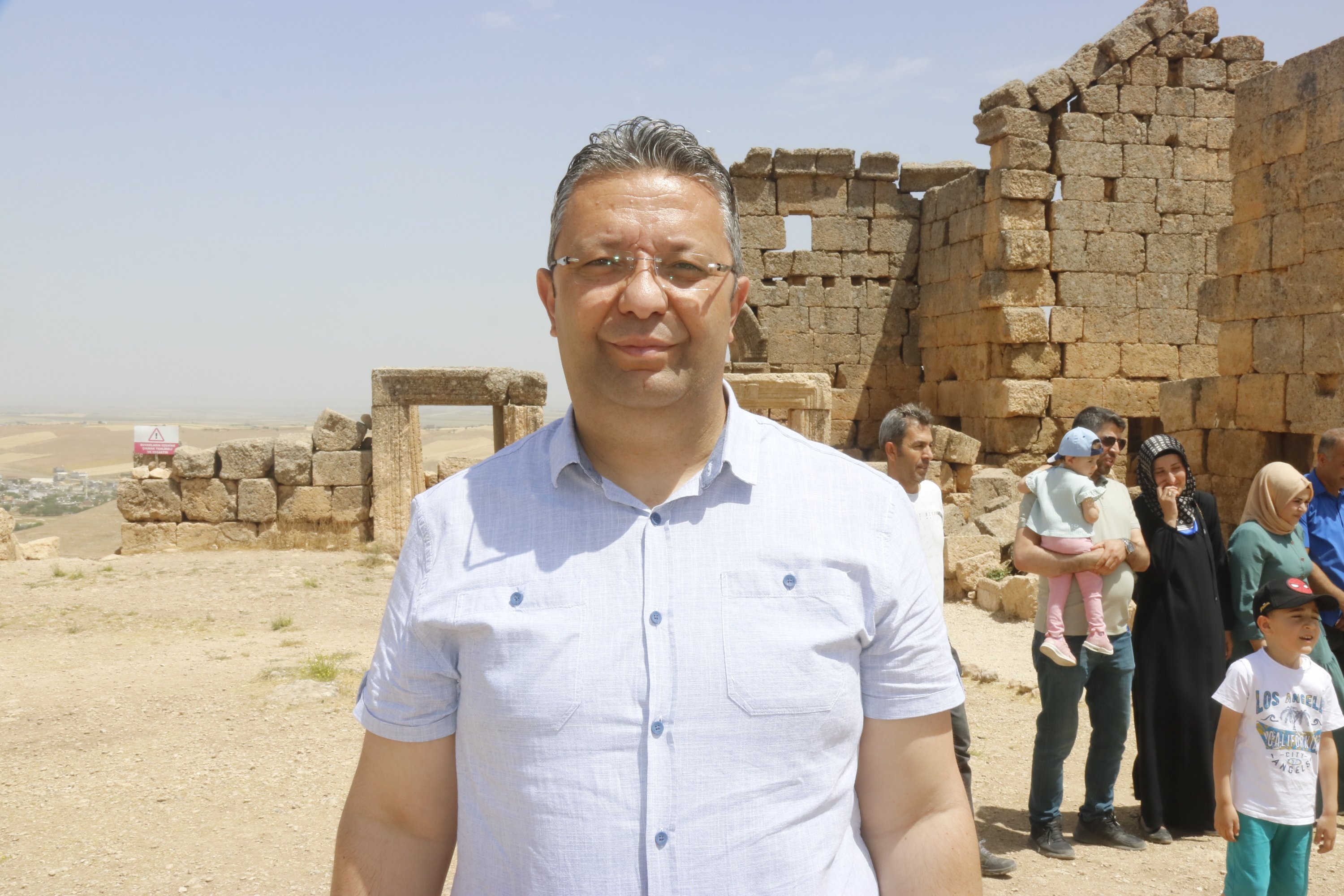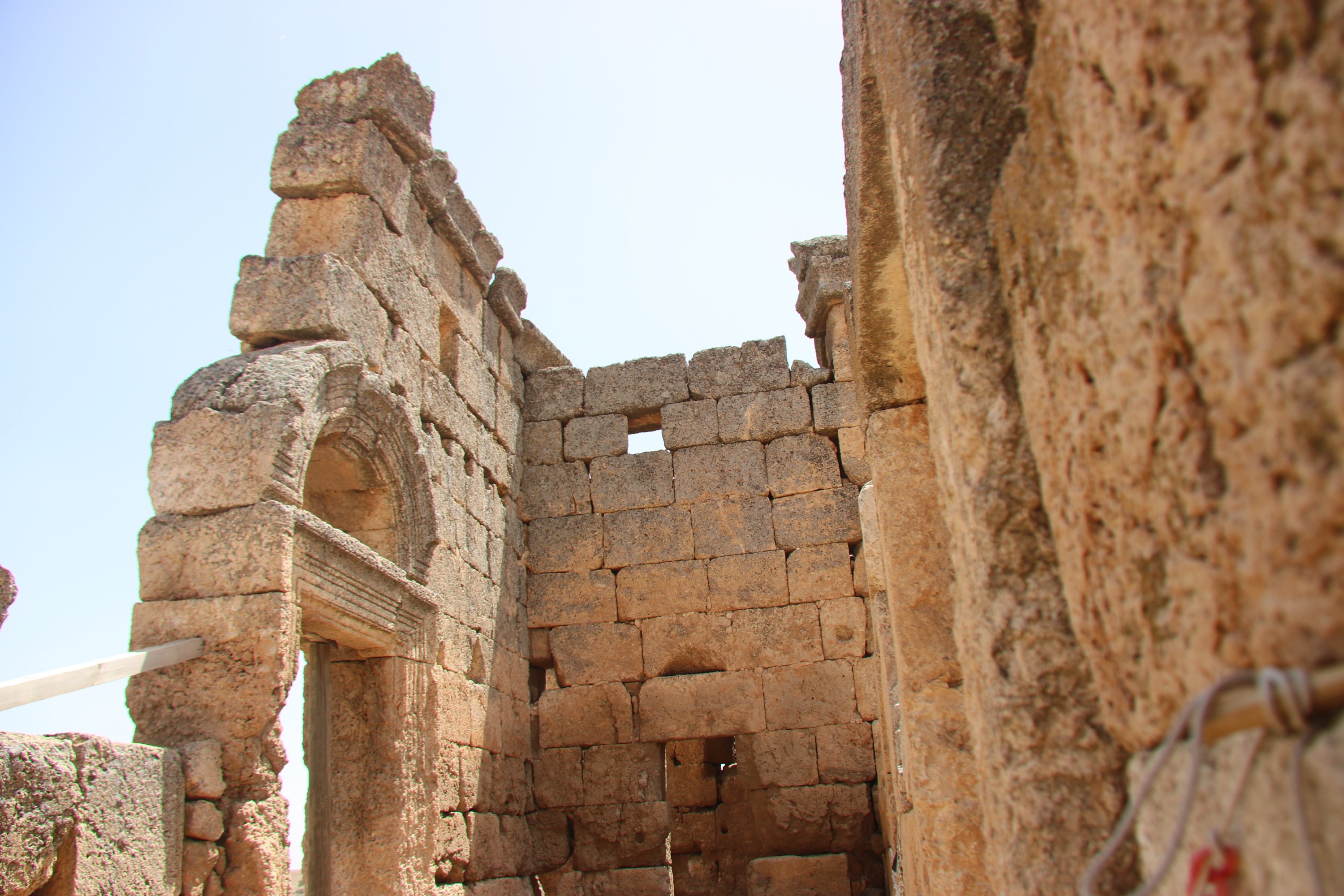© Turkuvaz Haberleşme ve Yayıncılık 2024
Massive structures have been discovered beneath Zerzevan Castle, which served as a Roman garrison for centuries, located in Diyarbakır. These structures were detected using ground-penetrating radar.
Zerzevan Castle, situated in the Çınar district of Diyarbakır, is a historically significant site that traces its origins back to the Assyrian period (882-611 B.C.). However, it gained prominence during the Roman period, particularly in the A.D. third century under the Severus Dynasty (A.D. 198-235), when a significant military settlement was established within its walls. This settlement remained in use until it was conquered by Islamic armies in 639.
The military settlement at Zerzevan Castle is encompassed by formidable walls, standing at an impressive height of 12-15 meters (39-49 feet) and stretching for a length of 1,200 meters. Within these walls, various architectural remnants bear witness to its rich history. Among them is an impressive 21-meter-high watchtower known as the southern tower, which served as a strategic vantage point. Additionally, the castle boasts a church, an administrative building, an arsenal and a rock altar located in the southern area, where public structures were situated.
Traces of streets and residences can be found in the northern part of the settlement, providing insights into the daily life of its inhabitants. Notably, the residential area also features an intriguing array of underground structures, including water cisterns, an underground church, an underground shelter and the Mithras Temple. The latter is of particular importance as it is the first temple of its kind discovered on the eastern border of the Roman Empire.

Beyond the protective walls, evidence of the settlement's infrastructure can be observed. For example, water supply channels, offering vessels and stone quarries indicate the importance of efficient resource management. Additionally, the necropolis area surrounding the castle showcases rock and vaulted tombs, providing insights into burial practices and rituals of the time.
Since the commencement of the excavation in 2014, numerous artifacts have been unearthed at Zerzevan Castle, shedding light on its rich history. In addition, using ground-penetrating radar scans, the excavation team has identified substantial underground structures, hinting at the existence of hidden mysteries waiting to be unveiled. As a result, the excavations will continue, focusing on exploring the secrets of the Mithras Temple.
Aytaç Coşkun, the head of the Zerzevan Castle excavation team, expressed their satisfaction with completing restoration projects for the existing structures within the castle. Furthermore, they announced that restoration work is scheduled to commence soon on the southern tower and the grand church in Zerzevan Castle.
Coşkun shared their excitement about the upcoming excavation of the sacred area of Mithras, which holds great significance as Mithras was an enigmatic Roman mystery cult. With no written documents available, many unanswered questions surround this belief system. Coşkun emphasized that the excavation team aims to address some of these mysteries through their ongoing work. They expressed optimism that, by the end of the year, significant progress will be made in unraveling the secrets of Mithras through the excavation efforts.

Highlighting the site's vastness, Coşkun mentioned the presence of a substantial above-ground city and a significant underground city within Zerzevan Castle. Notably, massive structures with multiple stories have been discovered, indicating their capacity to accommodate thousands of people. Excavation work will now extend to explore the underground areas beneath the larger above-ground city, offering further opportunities to uncover fascinating historical insights.
According to Coşkun, many artifacts have been unearthed thus far, numbering in the thousands. Currently, 120 of these artifacts are exhibited in the Inner Castle Archaeological Museum, providing visitors with a glimpse into the rich heritage of Zerzevan Castle. Looking to the future, plans are underway to establish a museum dedicated to these artifacts, allowing for a more comprehensive and immersive experience for visitors to appreciate the site's historical significance.
Being included in the UNESCO World Heritage Temporary List, the castle hosted 100,000 visitors in the first five months of the year. While it is expected to accommodate 500,000 people by the end of the year, with the completion of the visitor center, the goal is to attract at least 1 million people annually to the area.
Coşkun stated that the reason why could be that the castle is the best-preserved garrison in the world.
Stating that the structures and artifacts unearthed since the start of the excavations in 2014 attracted the world's attention, Coşkun said: "The discovery of the Mithras area in 2017, along with other structures and underground and above-ground structures, suddenly brought all the attention to Zerzevan Castle. This year, we reached the figure of 100,000 visitors. By the end of the year, 500,000 people will come."
Coşkun stated that a visitor center is currently under construction, and with its completion, at least 1 million people will visit Zerzevan Castle annually. "There is a significant number of both domestic and international visitors. Zerzevan Castle is included in all tour programs in the region. Additionally, special programs are being organized. Sometimes, 20-25 tour buses arrive in a single day. Tourists visiting Zerzevan have an impact on the entire tourism in the region," he said.

Local visitors Devrim Kavak and Ramazan Dağ expressed that they had an incredible time visiting Mardin. Devrim, originally from Mardin but now residing in Ankara for the past 30 years, decided to explore his hometown after seeing it featured on social media and television. He was captivated by the magnetic energy of the place and was left genuinely impressed.
On the other hand, Ramazan Dağ was visiting Mardin for the first time and instantly fell in love with the ancient city. The place's rich history surprised him, and he found himself fascinated by the layers of stories embedded within its walls. Moreover, the experience left him with a profound appreciation for the city's cultural heritage.
Both visitors' accounts highlight Mardin's unique allure, which captures the hearts of locals and first-time visitors alike. Its unique blend of historical significance and vibrant energy make it a destination that leaves a lasting impression on all who enjoy exploring its streets.
